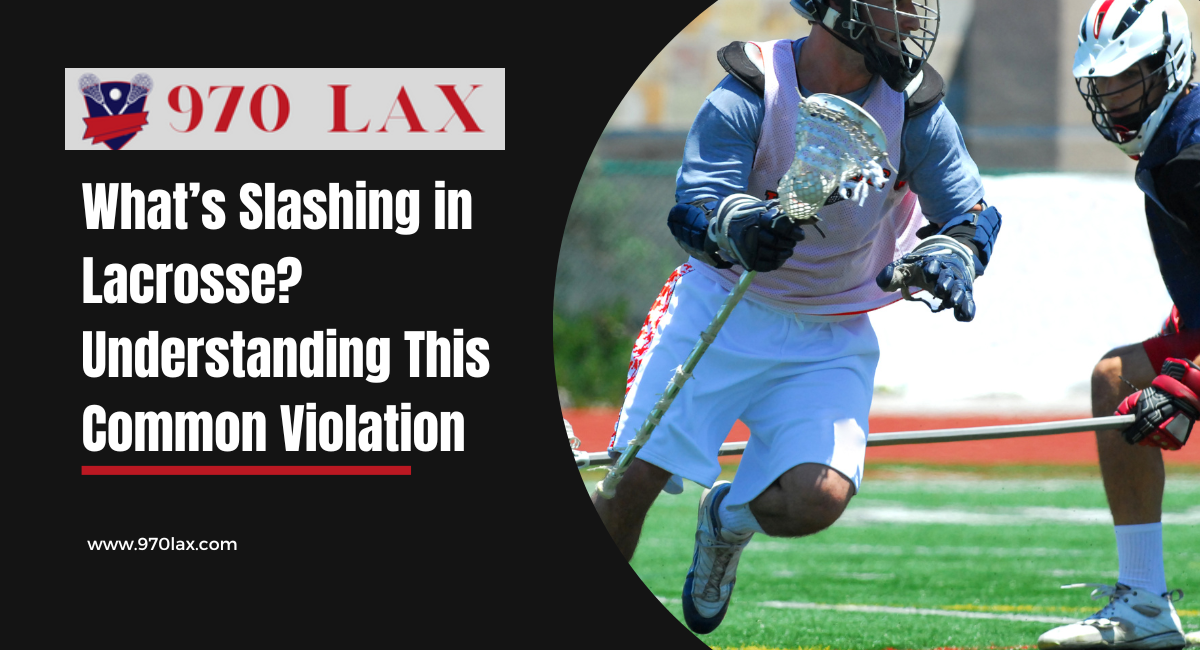Lacrosse, a fast-paced and physical sport, comes with its own set of rules and regulations to ensure fair play and player safety. One common infraction in lacrosse that players and fans often encounter is “slashing.” In this blog, we will explore what slashing in lacrosse is, why it’s penalized, the rules surrounding it, and its impact on the game.
What is Slashing in Lacrosse?
Slashing in lacrosse is a rule violation that occurs when a player uses their lacrosse stick to strike an opponent in a dangerous or illegal manner. The primary focus of this rule is player safety, as a slash can result in severe injury if executed recklessly. Slashing is a frequent violation in the game, and officials enforce this rule diligently to maintain the integrity and safety of lacrosse.
Why is Slashing Penalized?
Slashing is penalized for several reasons:
- Safety: Player safety is a paramount concern in lacrosse. Striking an opponent with a stick, especially to the head or body, can lead to concussions, injuries, or even more severe consequences.
- Fair Play: Lacrosse aims to be a fair and balanced sport. Slashing can provide an unfair advantage to a player by impeding their opponent’s ability to pass, shoot, or defend effectively.
- Maintaining Control: The rules are in place to ensure that players maintain control of their sticks and use them only for legal and constructive purposes.
Rules Surrounding Slashing
In lacrosse, specific rules govern the use of a lacrosse stick, including what constitutes a slashing violation:
- Striking Opponent: A player is penalized for slashing if they intentionally strike an opponent with their stick. This includes any part of the body or the opponent’s stick.
- Stick-to-Head Contact: Striking an opponent in the head or helmet with a stick is considered especially dangerous and is often penalized more severely.
- Illegal Cross Check: Using a cross-checking motion to strike an opponent’s body or stick is also considered slashing if it is deemed illegal.
- Aggressive or Reckless Action: The intent behind the action is essential. Even if a player’s stick makes contact with an opponent’s body unintentionally, they may still be penalized for slashing if the action was aggressive or reckless.
Penalties for Slashing
In lacrosse, penalties for slashing vary based on the severity of the infraction:
- Minor Penalty: A minor penalty is typically a one-to-three-minute penalty served by the offending player. The length of the penalty depends on the severity of the slash and the discretion of the officials.
- Major Penalty: A more severe slashing violation can result in a five-minute major penalty. Major penalties often involve more dangerous or deliberate actions that endanger the opponent.
- Ejection: In extreme cases, particularly if the slashing action was excessively dangerous, the player may be ejected from the game.
Impact on the Game
Slashing penalties can significantly impact the outcome of a lacrosse game. When a player is penalized for slashing, their team is temporarily shorthanded, creating opportunities for the opposing team to score. Penalties can shift momentum, affect scoring, and disrupt team strategies, making it crucial for players to adhere to the rules and maintain discipline on the field.
Conclusion
Slashing in lacrosse is a rule violation designed to ensure player safety, fairness, and the integrity of the game. Understanding the rules surrounding slashing and the potential consequences for infringing them is vital for all players, coaches, and fans. Promoting a safe and respectful playing environment is key to enjoying the fast and exciting sport of lacrosse while minimizing unnecessary risks and injuries.
Read More: How to Draw a Lacrosse Stick: A Step-by-Step Guide












